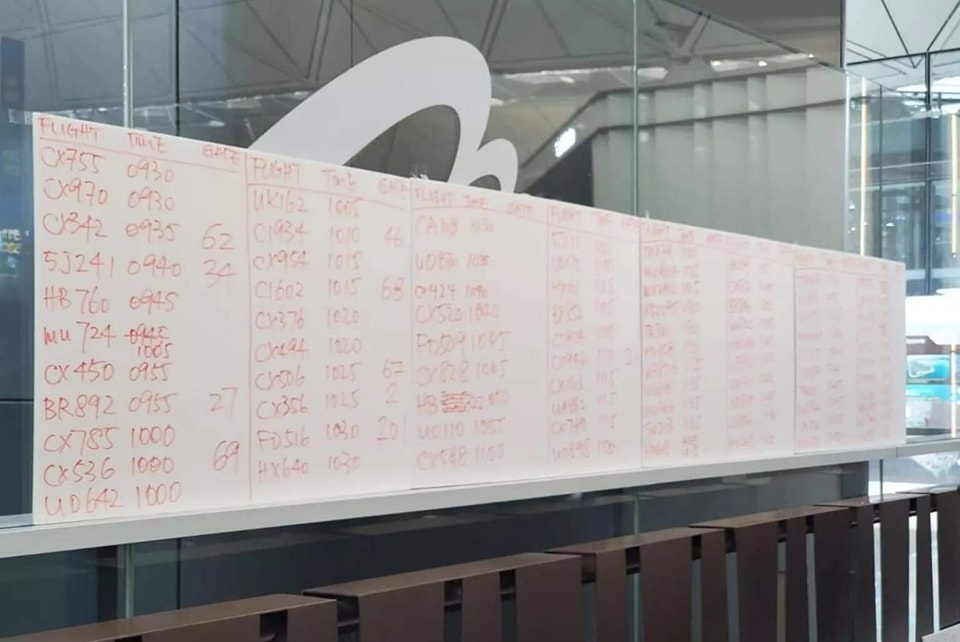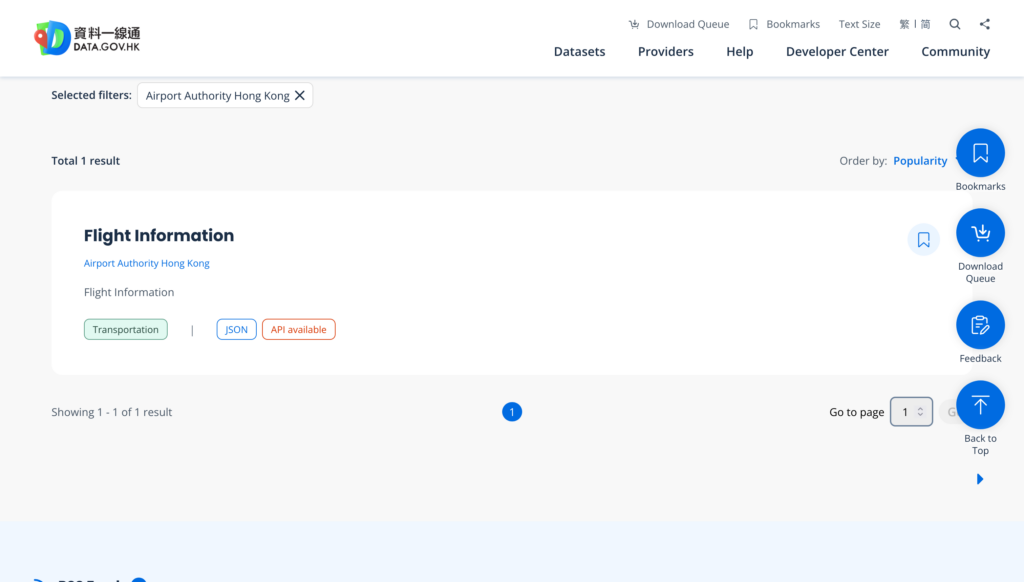
On June 23, 2024, the flight information system at Hong Kong International Airport experienced a malfunction. The airport had to temporarily resort to using whiteboards to manually provide flight information. Passengers and the general public could only learn about the flight situation by physically arriving at the airport. This incident once again highlighted the importance of open data.
Flights were operating as usual that day, and the airport control tower did not encounter any problems, so the Airport Authority of Hong Kong had complete access to real-time flight information. However, the issue was with the Airport Authority’s ability to disseminate the real-time flight information, as the computer system responsible for displaying the information on the electronic screens throughout the airport failed to function properly. The airport’s website and the mobile app “My HKG” also could not provide up-to-date flight information to passengers and the public.
Currently, the public can only access Hong Kong airport’s real-time flight data through the Airport Authority’s website and official mobile app. The lack of relevant open data prevents third-party and civilian developers from conveniently developing various programs, and the Airport Authority has a monopoly on flight information services.

Provide real-time open data and promote transparency of flight information at Hong Kong airport as soon as possible
The Airport Authority currently only provides historical data on flight information as open data, which is updated and published daily through the Office of Government Chief Information Officer (OGCIO)’s DATA GOV HK Portal. Recalling a few years ago, I had previously submitted a suggestion through the DATA GOV HK Portal requesting the Airport Authority to provide real-time flight data as open data, so that developers could utilize the open data to develop various digital applications, and researchers could also conveniently conduct research. Years ago, when I attended an open data meeting with the OGCIO team, I learned that the Office has always been forwarding the opinions collected through the DATA GOV HK Portal to the relevant departments and organizations for handling. However, since the DATA GOV HK Portal’s suggestion form is a one-way collection, the submitter is unable to know the status of the suggestion’s processing, and my suggestion submitted years ago has been lost without a trace.
Open data refers to data that anyone can freely use, reuse, and publish, regardless of the purpose. By opening up flight information data, the airport can quickly activate alternative solutions in the event of system failures, ensuring that passengers can obtain the necessary flight information in a timely manner.
First, open data can enhance the airport’s emergency response capability. When a system failure occurs, the airport can immediately access the open flight information data and disseminate information through various alternative channels to passengers, avoiding chaos caused by lack of information. This not only reduces the impact of the failure on passengers, but also greatly enhances the airport’s emergency response capabilities.
Secondly, open data can promote transparency of flight information. As long as the flight information is made open, third-party platforms and applications can integrate and present it to passengers in real-time. Passengers can check flight status anytime through mobile apps or other channels, greatly improving the convenience of information access.
In addition, open data can also drive innovation in flight information services. Third-party developers can use the open data to develop various innovative applications that provide flight information, meeting the personalized needs of different passengers. This not only brings a better experience to passengers, but also creates new business opportunities for the airport.
It can be said that open data provides strong support for the airport’s flight information system. In the face of sudden events such as system failures, the airport can quickly activate alternative solutions to ensure the timely release of flight information. In the long run, open data can also promote the transparency and innovation of flight information services, bringing better experiences to passengers.
Establishing Open Data Standards to Facilitate Collaborative Efforts
Currently, the MTR and several bus companies in Hong Kong have provided real-time schedule information. There are also community initiatives like the hkbus.app that provide alternative options for the public. At the same time, open data initiatives have established standardized data sharing formats. Data providers and app developers can work together to provide information to the general public.
If the incident had occurred on that day, the Airport Authority could have already provided real-time flight data through the information hotline by establishing open data format standards. The Airport Authority can try manually updating flight information using Excel, saving the spreadsheet in an open CSV format, and writing a simple Python script of a few dozen lines to convert the CSV into the standardized open data format. This would allow them to continue providing data to third-party and in-house applications, leading to a better passenger experience.
I hope the Airport Authority can learn from this incident and listen to the information technology industry’s demands for open real-time flight data. They should collaborate with the community to leverage technology for the development of airport services.
(Image source: Frontline Tech Workers Concern Group Facebook)
(Chinese version: 香港機場回歸寫白板、資訊管理思維守舊)